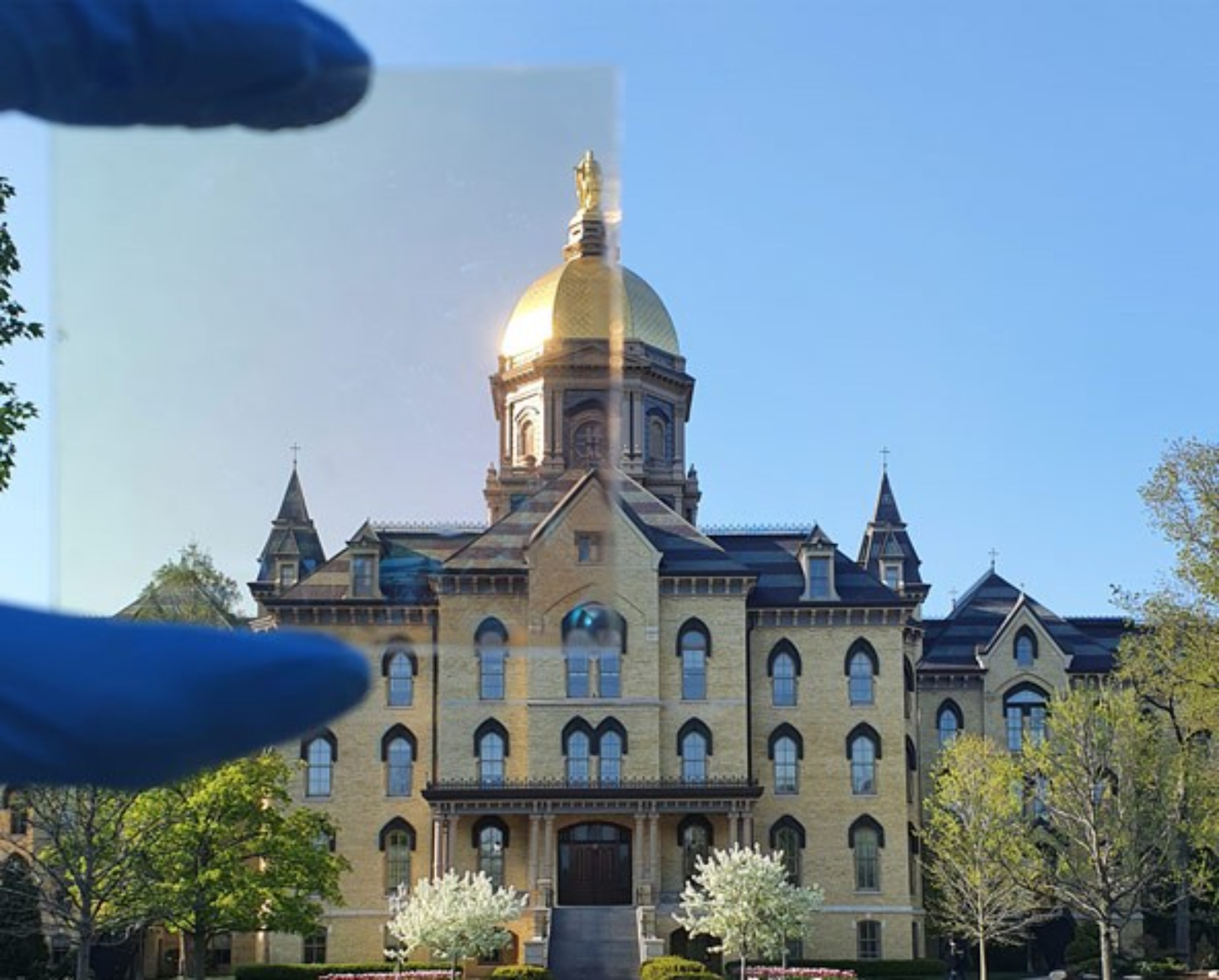

Two researchers at the University of Notre Dame in collaboration with South Korea’s Kyung Hee University recently utilized quantum computing to help develop a new transparent window coating capable of blocking solar heat. In findings published in ACS Energy Levels, Tengfei Luo, Notre Dame’s Dorini Family Professor of Energy Studies, and postdoctoral associate, Seongmin Kim, worked together to devise their transparent radiative cooler (TRC) layer, which only permits external visible light that doesn’t raise indoor temperatures, thus cutting buildings’ cooling costs by as much as a third of current rates. According to the International Energy Agency, air conditioning and electric fans comprise 20 percent of buildings’ energy costs around the world—roughly 10 percent of human electricity consumption.
To determine the absolute best materials configuration, the team relied on machine learning and the promising field of quantum computing for a solution. Although in its relatively early phases of development, quantum computing offers immense potential due to its ability to far surpass traditional computing methods. Currently, even the most advanced of classical supercomputers rely on a binary state—representing information as 1’s and 0’s—to do all their calculations, meaning that there are limits to what they can and can’t achieve. Quantum computing, in contrast, can represent information as either 1, 0, or a combination of the two. This hypothetically gives scientists a massive advantage in numerous fields, such as natural science simulations and nuclear fusion research.
[Related: In photos: Journey to the center of a quantum computer.]
In order for Luo and Kim’s TRC design to work properly, incredibly thin layers of materials needed to be compiled in an exact way to ensure optimal heat reduction. In this case, machine learning and quantum computing teamed up to test models within fractions of a second, parsing through virtually ever possible mixture and material combination to find the best one.
The result is a 1.2 micron-thick layering of silica, alumina, and titanium oxide upon a glass base that is then coated with the same polymer used in contact lenses. The new combination subsequently outperformed other heat-reduction glass coating currently available. “I think the quantum computing strategy is as important as the material itself,” Luo said in a press release from the University of Notre Dame yesterday. “Using this approach, we were able to find the best-in-class material, design a radiative cooler and experimentally prove its cooling effect.”
As advancements progress, these kinds of transparent heat-reducing layers can be increasingly applied to windows and glass structures in order to help dramatically lower energy emissions as the world races to stave off climate change’s worst potential futures.
